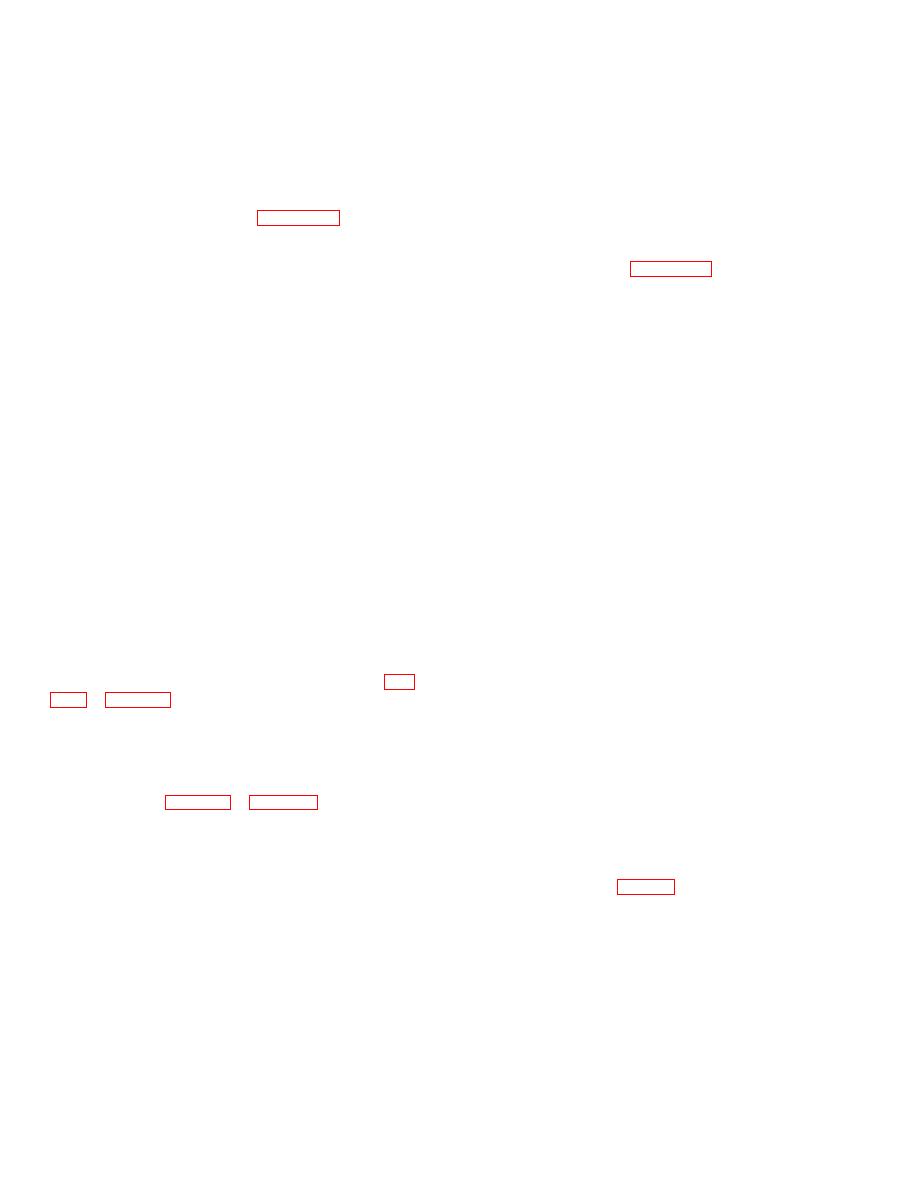
| Tweet |

Custom Search
|
|

|
||
 TM 55-1905-217-12
(3) Clean all of the exterior dirt from the pump
(3) Clean all of the exterior dirt from the hand
and the hydraulic lines.
pump and the hydraulic lines.
(4) Disconnect the hydraulic lines from the
(4) Disconnect the hydraulic lines to the
pump and the hydraulic lines.
pump.
(4) Disconnect the hydraulic lines from the
(5) Remove the attaching bolts and
pump. Then, loosen the bolts holding the mounting plate
lockwashers and lift the pump from its mounting.
and remove the plate and pump as an assembly.
c. Pump Installation. See figure 4-49.
c. Installation
(1) Affix a new gasket to the flywheel housing,
(1) Secure the pump to its mounting with
using a non-hardening gasket cement on the flywheel
attaching bolts and lockwashers.
housing side only.
(2) Refer to figure 2-21 and connect the
(2) Aline the tangs on the pump drive with the
hydraulic lines.
slobs in the drive plate. Attach the pump and mounting
plate securely to the engine with bolts and lockwashers.
NOTE
Make sure the lines and fittings are clean before any
CAUTION
connections are made. With the exception of the thread
nearest the open end, sealant must be applied in a small
Do not force the pump into place. Use of force, or
amount to ONLY the male threads. Never apply sealant
tightening the bolts when the mounting flange is not
to the female threads. Work the sealant into the threads
against the flywheel housing, will force the drive arm
and wipe off the excess with a clean, lint-free cloth so
against the pump body and result in damage to the pump
that the sealant will not be washed into the system.
when the engine is started.
4-63.
Hydraulic Starting Motors
(3) Apply sealant sparingly to all MALE PIPE
THREADS only and work it into the threads.
a. General. Hydraulic starting motors are installed
on the inboard engine of each propulsion unit. The two
CAUTION
hydraulic starting motors, CMD-2A-111 and CMD-2A-
221, are similar except for direction of rotation. Model
Do not apply sealant to the last thread (that nearest the
CMD-2A-111 has a clockwise rotation, viewing from the
open end) or to female fittings, as it may wash into the
starter drive end, and is mounted on the inboard engine
system.
of the starboard propulsion unit. Model CMD-2A-221
rotates counterclockwise, viewing from the drive end,
(4) Connect the hydraulic lines to the pump.
and is mounted on the inboard engine of the port
propulsion unit.
b. Removal.
4-62. Hand Pump Hydraulic Starting System (fig.
(1) Close both accumulator valves.
2-21 or fig. 2-22)
(2) Release pressure in hydraulic system
lines.
a. General. The hand pump is used to provide the
(3) Clean all of the exterior dirt from the
initial hydraulic pressure for first starts or to build up
starter and the hydraulic lines.
pressure in the hydraulic starting system if it has been
(4) Disconnect the hydraulic lines from the
released for any reason.
starting motor. Cover the open ends of the lines with
b. Removal (fig. 2-21 or fig. 2-22).
masking tape to prevent the entry of dirt.
(1) Close both accumulator valves.
(5) Remove the three retaining bolts and
(2) Release the pressure in the hydraulic
lockwashers and lift the starting motor away from the
starting system.
flywheel housing.
c. Installation (fig. 4-5).
CAUTION
(1) Insert the hydraulic starting motor in the
The oil pressure in the system must be released prior to
flywheel housing opening. When properly alined, the
servicing the hand pump or any other components of the
pilot diameter of the hydraulic starting motor adapter will
system, to prevent possible injury to personnel or
enter easily-do not use force. Rotate the starting motor
equipment.
so that the bolt holes are alined with the tapped holes in
the flywheel housing. Then secure the starting motor to
the flywheel housing with three bolts and lockwashers.
4-58
|
||
 |
||